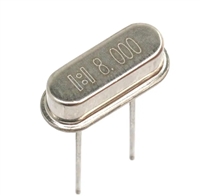AD8322
Single-Ended-to-Differential Input (Figure 8 Option 1)
Install the Mini-Circuits T1-6T-KK81 1:1 transformer in the T1
location of the evaluation board. Install 0 Ω chip resistors in R12,
R13, and R17, and leave R14, R16, and R19 open. For 75 Ω
input impedance, install a 110 Ω resistor in R7 located on the back
side of the evaluation board and leave R5 and R6 open. In this
configuration the input signal must be applied to the VIN+ port of
the evaluation board from a single-ended 75 Ω signal source. For
input impedances other than 75 Ω, use the following equation
to compute the correct value for R7.
Installing the Visual Basic Control Software
To install the “CABDRIVE_22” evaluation board control soft-
ware, first close all Windows applications and run “SETUP.EXE”
located on Disk 1 of the AD8322 Evaluation Software. Follow
the on-screen instructions and insert Disk 2 when prompted to
do so. Enter the path of the directory into which the software
will be installed and select the button in the upper left corner to
complete the installation.
Running the Software
To invoke the control software, go to START -> PROGRAMS
-> CABDRIVE_22, or select the AD8322.EXE icon from the
directory containing the software.
Desired Input Impedance = R7ʈ235
Single-Ended-to-Differential Input (Figure 8 Option 2)
Install the Mini-Circuits T1-6T-KK81 1:1 transformer in the T1
location of the evaluation board. Install 0 Ω chip resistors in R12,
R13, R17, and R19, and leave R14 and R16 open. For 75 Ω input
impedance, install 55 Ω resistors in R5 and R6 located on the back
side of the evaluation board and leave R7 open. In this configu-
ration the input signal must be applied to the VIN+ port of the
evaluation board from a single-ended 75 Ω signal source. For
input impedances other than 75 Ω, use the following equation
to compute the correct values for R5 and R6.
Controlling the Gain/Attenuation of the AD8322
The slide bar controls the AD8322’s gain/attenuation, which is
displayed in dB and in V/V. Although the AD8322 is designed
for use at the eight gain codes described in the SPI Programming
and Gain Adjustment section, all of the intermediate codes are
included in the software. Code 0 is also included because of the
high isolation it provides. The gain code (i.e., position of the slide
bar) is displayed in decimal, binary, and hexadecimal (see
Figure 9).
R5 = R6 = R, Desired Input Impedance = 2 × (Rʈ117.5)
POWER-UP AND POWER-DOWN
Differential Input (Figure 8 Option 3)
The “Power-Up” and “Power-Down” buttons select the mode of
operation of the AD8322 by controlling the logic level on the
asynchronous PD pin. The “Power-Up” button applies a Logic
1 to the PD pin putting the AD8322 in forward transmit mode.
The “Power-Down” button applies a Logic 0 to the PD pin select-
ing reverse mode, where the forward signal transmission is disabled
while a back termination of 75 Ω is maintained.
If a differential signal source is available, it may be applied directly
to both the VIN+ and VIN– input ports of the evaluation board. In
this case, install 0 Ω chip resistors in R8, R14, R15, and R16, and
leave R12, R13, and R19 open. Referring to Figure 8 Option 3 and
the AD8322 evaluation board, a differential input impedance
of 150 Ω can be achieved by installing a 432 Ω resistor in R7,
leaving R5 and R6 open. If another input impedance is desired,
the following equation can be used to compute the correct
value for R7.
Memory Section
The “MEMORY” section of the software provides a convenient
way to alternate between two gain settings. The “X->M1” but-
ton stores the current value of the gain slide bar into memory
while the “RM1” button recalls the stored value, returning the
gain slide bar to that level. The “X->M2” and “RM2” buttons
work in the same manner.
Desired Input Impedance = R7ʈ235
DIFF IN
R7
T1
AD8322
OPTION 1 DIFFERENTIAL INPUT TERMINATION
R6
DIFF IN
T1
AD8322
R5
OPTION 2 DIFFERENTIAL INPUT TERMINATION
VIN+
R7
AD8322
VIN–
OPTION 3 DIFFERENTIAL INPUT TERMINATION
Figure 8. Differential Input Termination Options
–10–
REV. 0






 资料手册解读:UC3842参数和管脚说明
资料手册解读:UC3842参数和管脚说明

 一文带你了解无源晶振的负载电容为何要加两颗谐振电容CL1和CL2
一文带你了解无源晶振的负载电容为何要加两颗谐振电容CL1和CL2

 玻璃管保险丝与陶瓷管保险丝:区别与替代性探讨
玻璃管保险丝与陶瓷管保险丝:区别与替代性探讨

 PCF8574资料解读:主要参数分析、引脚说明
PCF8574资料解读:主要参数分析、引脚说明
